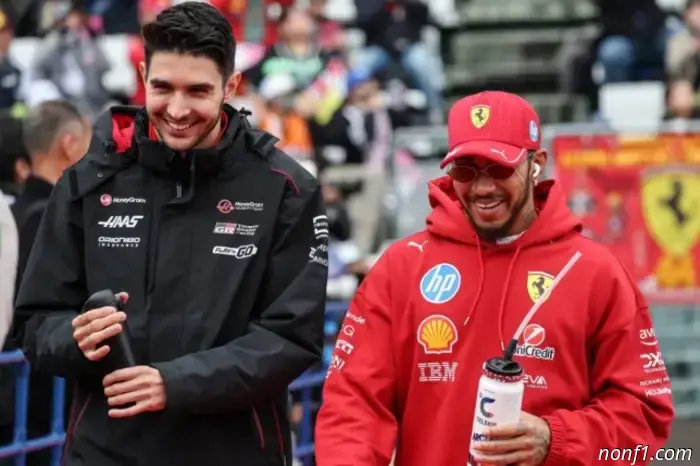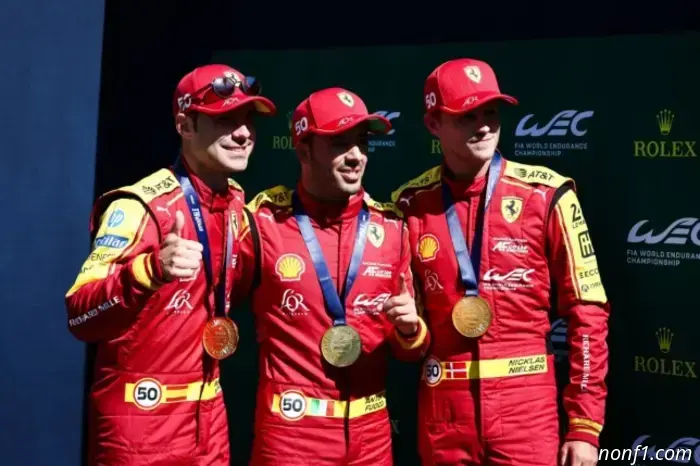
Safnauer on the "Max factor" and the McLaren advantage
A quarter of the season is over, and Max Verstappen now has a second team-mate: Liam Lawson drove the first two races for Red Bull Racing, and Yuki Tsunoda has been driving the team's second car since the Japanese Grand Prix.
But if the four-time world champion, who occupies the 3rd place in the personal standings, has 99 points, then Lawson still can't earn anything, and Tsunoda has 9 points, three of which he got while driving a Racing Bulls car.
According to Otmar Safnauer, such a significant difference between Verstappen and his teammates is due to the special "Max factor".
The RB21 car has a very narrow range of settings, and only the Dutchman manages to tame it really effectively, although so far in 2025 he has won only one victory and is increasingly lagging behind the McLaren drivers, who occupy the top two personal standings.
Safnauer, who in the past led teams such as Force India/Racing Point, Aston Martin and Alpine, taking part in the RacingNews365 podcast, said: "I don't have the telemetry data that I used to have access to, and I can only judge what's going on from an outside observer's perspective.
From my point of view, Yuki is a very capable racer and drives exactly the same car as Max. But if one of the Red Bull Racing drivers wins pole, and the second one shows the 10th result in qualifying, losing about seven tenths, then in this situation we need to talk about the effect of a special "Max factor".
Look at McLaren: they have the best car right now, and their drivers' qualifying results are only one tenth different – that's saying something too."
This season, McLaren's advantage is even more pronounced in racing than in qualifying, which is why Oscar Piastri and Lando Norris won five of the six stages.
"What McLaren really excels at is their pace over long laps," Safnauer continued. "Their advantage is even more pronounced here than on a single fast lap. This may be due to several reasons, including the design features of the machine, the approach to its modernization and settings. For example, the MCL39 allows racers to work very efficiently with rubber.
When I was in charge of Force India, I made sure that we had the best tire engineers we could hire. In the process of upgrading the car, we paid great attention to how certain technical innovations affect the behavior of rubber, and tried to achieve an advantage due to this. Therefore, there have been races when only our team managed to limit itself to only one pit stop instead of two.
Even at Alpine, I tried to develop our understanding of tire performance and expanded the staff of specialists in this field. For example, at my last Miami Grand Prix, we scored 5th and 8th in qualifying, and in the race we scored points with two cars, taking 8th and 9th places.
These results are explained by the fact that we have been paying attention to precisely those areas of the car that can be upgraded ahead of our immediate rivals. And if McLaren uses the same approach, and it has been successful, then it allows for a huge advantage."
Other articles
 Vijay Mallya is racing again – historical
The racing press is writing about Vijay Mallya again, and the reason is this: the former owner of Force India is racing again, as in his younger years...
Vijay Mallya is racing again – historical
The racing press is writing about Vijay Mallya again, and the reason is this: the former owner of Force India is racing again, as in his younger years...
 Esteban Ocon: I can understand Lewis' difficulties.
Esteban Ocon says he understands the difficulties Lewis Hamilton has faced this season in adapting to the Ferrari car...
Esteban Ocon: I can understand Lewis' difficulties.
Esteban Ocon says he understands the difficulties Lewis Hamilton has faced this season in adapting to the Ferrari car...
 Ferrari hopes for a change, but not before Barcelona
At the Barcelona stage, we can expect noticeable changes in the balance of power, and Ferrari has high hopes for this...
Ferrari hopes for a change, but not before Barcelona
At the Barcelona stage, we can expect noticeable changes in the balance of power, and Ferrari has high hopes for this...
 Dan Tauriss: We don't want to be like others
Dan Tauriss, the head of TWG Motorsports, who is leading the Cadillac F1 team project, has not yet provided specific information, but at least shares his vision of the future...
Dan Tauriss: We don't want to be like others
Dan Tauriss, the head of TWG Motorsports, who is leading the Cadillac F1 team project, has not yet provided specific information, but at least shares his vision of the future...
 WEC: Three Ferraris will start from the top three positions at Spa
The third stage of the World Endurance Racing Championship is taking place in Spa this weekend, and the crews performing on Ferrari 499P hypercars delighted the fans again yesterday...
WEC: Three Ferraris will start from the top three positions at Spa
The third stage of the World Endurance Racing Championship is taking place in Spa this weekend, and the crews performing on Ferrari 499P hypercars delighted the fans again yesterday...
 Montoya: I wouldn't be surprised if Lawson is replaced by Lindblad.
Juan Pablo Montoya won't be surprised if Racing Bulls ends its partnership with Liam Lawson in the middle of the season...
Montoya: I wouldn't be surprised if Lawson is replaced by Lindblad.
Juan Pablo Montoya won't be surprised if Racing Bulls ends its partnership with Liam Lawson in the middle of the season...
Safnauer on the "Max factor" and the McLaren advantage
Otmar Safnauer, who once led various Formula 1 teams, talks about the reasons for Max Verstappen's advantage over his teammates...
